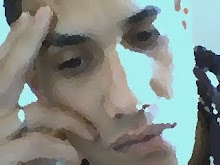Loss of eyesight impacts every single aspect of daily life. In past eras, those who went blind without benefit of social safety nets often ended life as beggars. While that is usually no longer the case, diseases like glaucoma still exact a severe personal toll, and still can result in visual impairment if not found and treated in the early stages. Glaucoma San Antonio patients continue fighting this scourge using medical advances and education.
It commonly affects both eyes, and is characterized by an increase in fluid pressure within the eye. Under normal conditions, the fluids drain away, allowing pressure to equalize. When that process is interrupted, internal forces slowly build, and can cause long-term damage to the optic nerve and adjacent eye structures. There are two main types of this ailment, designated open or closed angle.
Because this eye disease progresses slowly, victims may not initially be physically aware of any problem. As time passes, damaged nerves slowly cause losses in peripheral vision, a process that may continue for years. In the final stages, all sight is severely affected and vision restricted to a narrow tunnel directly in front of the face. Closed angle disease can cause immediate problems with very prominent symptoms.
These include blurred vision accompanied by eye pain, which may be severe enough to cause nausea and vomiting. Lights appear to have surrounding auras, and adjusting to different illumination levels becomes difficult. Risk of developing the disease increases with age, and can also affected by ethnic background, previous eye surgery, and the presence of certain other illnesses.
The key to successful treatment is early diagnosis. Pressure tests have become a standard part of most eye exams, and can immediately detect dangerously high levels. Additional tools include gonioscopy, a procedure determining blockage of the angle between the iris and cornea. Perimetry tests can tell whether portions of lateral vision are missing, and optic nerve tools reveal the extent of damage at the rear of the eye.
When an exam reveals existing issues, treatment often begins immediately. Although there are currently no complete cures for this combination of eye conditions, progression can now be dramatically slowed, and often halted. Existing destruction is not reversible, but the most effective medications include eye drops containing beta blockers, fluid inhibitors, prostaglandin analogues, or liquid flow stimulants.
In some cases, the drops may not prove effective, requiring surgery to relive pressure. Lasers are increasingly being used to unblock drainage passages, and some patients benefit from filtering procedures intended to relieve pressure manually. Some patients receive an aqueous shunt implant. Victims of acute-angle glaucoma are treated as emergencies cases, and require immediate pressure reducing drugs in combination with surgery.
Sufferers in San Antonio TX realize the importance of testing and treatment to combat the progression of this vision-robbing condition. Because there may be no apparent symptoms, only a vision specialist can detect the first signs of trouble. Technological advances in visual medicine have made detection simple and pain-free. Early diagnosis reduces the chance that long-term problems will develop.
It commonly affects both eyes, and is characterized by an increase in fluid pressure within the eye. Under normal conditions, the fluids drain away, allowing pressure to equalize. When that process is interrupted, internal forces slowly build, and can cause long-term damage to the optic nerve and adjacent eye structures. There are two main types of this ailment, designated open or closed angle.
Because this eye disease progresses slowly, victims may not initially be physically aware of any problem. As time passes, damaged nerves slowly cause losses in peripheral vision, a process that may continue for years. In the final stages, all sight is severely affected and vision restricted to a narrow tunnel directly in front of the face. Closed angle disease can cause immediate problems with very prominent symptoms.
These include blurred vision accompanied by eye pain, which may be severe enough to cause nausea and vomiting. Lights appear to have surrounding auras, and adjusting to different illumination levels becomes difficult. Risk of developing the disease increases with age, and can also affected by ethnic background, previous eye surgery, and the presence of certain other illnesses.
The key to successful treatment is early diagnosis. Pressure tests have become a standard part of most eye exams, and can immediately detect dangerously high levels. Additional tools include gonioscopy, a procedure determining blockage of the angle between the iris and cornea. Perimetry tests can tell whether portions of lateral vision are missing, and optic nerve tools reveal the extent of damage at the rear of the eye.
When an exam reveals existing issues, treatment often begins immediately. Although there are currently no complete cures for this combination of eye conditions, progression can now be dramatically slowed, and often halted. Existing destruction is not reversible, but the most effective medications include eye drops containing beta blockers, fluid inhibitors, prostaglandin analogues, or liquid flow stimulants.
In some cases, the drops may not prove effective, requiring surgery to relive pressure. Lasers are increasingly being used to unblock drainage passages, and some patients benefit from filtering procedures intended to relieve pressure manually. Some patients receive an aqueous shunt implant. Victims of acute-angle glaucoma are treated as emergencies cases, and require immediate pressure reducing drugs in combination with surgery.
Sufferers in San Antonio TX realize the importance of testing and treatment to combat the progression of this vision-robbing condition. Because there may be no apparent symptoms, only a vision specialist can detect the first signs of trouble. Technological advances in visual medicine have made detection simple and pain-free. Early diagnosis reduces the chance that long-term problems will develop.
About the Author:
Get a summary of the benefits of undergoing glaucoma San Antonio surgery and more information about an experienced surgeon at http://www.saeye.com now.


